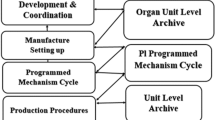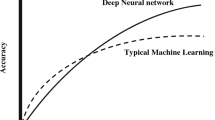Abstract
In this paper a low power and low output ripple regulator is designed with teaching-learning-based optimization (TLBO) for radio frequency identification applications. In order to decrease the power consumption the voltage of regulator sub-blocks is supplied from elementary stages. In the proposed operational amplifier employed to the regulator, adaptive biasing is used and bandgap reference of the regulator is totally designed by MOSFET. To optimize the proposed regulator after modeling the regulator with the help of neural network, TLBO algorithm is used. The outputs of TLBO are output voltage, ripple value and power consumption. By using this algorithm the output voltage is 0.8 V with 2.78 mV ripple and \(115\,\upmu \hbox {W}\) power consumption. Also the quiescent current of this design is decreased to 290 nA. The chip area of the layout design in Cadence software is about \(0.00124\,\hbox {mm}^2\). The operation frequency of this circuit is 960 MHz and the simulation is done in \(0.18\,\upmu \hbox {m}\) CMOS technology.











Similar content being viewed by others
References
Yao, Y., Wu, J., Shi, Y., & Dai, F. F. (2009). A fully integrated 900-MHz passive RFID transponder front end with novel zero-threshold RFDC rectier. IEEE Transactions on Industrial Electronics, 56(7), 2317–2325.
Balachandran, G. K., & Barnett, R. E. (2006). A 110 nA voltage regulator system with dynamic bandwidth boosting for RFID systems. IEEE Journal of Solid-State Circuits, 41(9), 2019–2028.
Cesar, P., Crepaldi, C., Pimenta, T. C., Moreno, R. L., & Rodriguez, E Ch. (2012). A low power CMOS voltage regulator for a wireless blood pressure biosensor. IEEE Transactions on Instrumentation and Measurement, 61(3), 729–739.
Lee, M. Ch., Hu, Ch. Ch., & Lin., Z. W. (2012). Implementation of low dropout regulator with low bandgap reference voltage circuit for RFID tag applications. In Cross strait quad-regional radio science and wireless technology conference (CSQRWC), pp. 40–43.
Liu, C. E., Hsieh, Y. J., & Kiang, J. F. (2010). RFID regulator design insensitive to supply voltage ripple and temperature variation. IEEE Transactions on Circuits and Systems-II: Express Briefs, 57(4), 255–259.
De Vita, G., & Iannaccone, G. (2006). Ultra-low-power series voltage regulator for passive RFID transponders with subthreshold logic. Electronics Letters, 42, 1350–1351.
Salehi, M. R., Dastanian, R., Abiri, E., & Nejadhasan, S. (2015). A \(147\,\upmu \hbox{W}\), 0.8V and 7.5 (mV/V) LIR regulator for UHF RFID application. International Journal of Electronics and Communications (AEU), 69(1), 133–140.
Magnelli, L., Crupi, F., Corsonello, P., Pace, C., & Iannaccone, G. (2011). A 2.6 nW, 0.45 V temperature-compensated subthreshold CMOS voltage reference. IEEE Journal of Solid-State Circuits, 46(2), 465–474.
Anvesha, A., & Baghini, M. Sh. (2013). A Sub-1V 32 nA process, voltage and temperature invariant voltage reference circuit. In IEEE 12’ th international conference on VLSI design and 26th international conference on embedded systems (VLSID), pp. 136–141.
Ma, H., Zhou, F. (2009). A Sub-1V 115 nA 0.35 μm CMOS voltage reference for ultra low power applications. IEEE 8’ th International conference on ASIC, pp. 1074–1077.
Wilson, W., Chen, T., & Selby, R. (2013). A current-starved inverter-based differential amplifier design for ultra-low power applications. In IEEE 4’ th Latin American symposium on circuits and systems (LASCAS), pp. 1–4.
Lopez-Martin, A. J., Baswa, S., Ramirez-Angulo, J., & Carvajal, R. G. (2005). Low-voltage super class AB CMOS OTA cells with very high slew rate and power efficiency. IEEE Journal of Solid-State Circuits, 40(5), 1068–1077.
Bernal, M. R. V., Celma, S., Medrano, N., & Calvo, B. (2012). An ultralow-power low-voltage class-AB fully differential OpAmp for lond-life autonomous portable equipment. IEEE Transactions on Circuits and Systems-II, 59(10), 643–647.
Dejhan, K., Suwanchatree, N., Prommee, P., Piangprantong, S., & Chaisayun, I. (2004). A CMOS voltage-controlled grounded resistor using a single power supply. IEEE ISCIT, 1, 124–127.
Rao, R. V., Savsani, V. J., & Vakharia, D. P. (2011). Teaching-learning-based optimization: A novel method for constrainedmechanical design optimization problems. Computer-AidedDesign, 43, 303–315.
Author information
Authors and Affiliations
Corresponding author
Rights and permissions
About this article
Cite this article
Abiri, E., Dastanian, R., Salehi, M.R. et al. An Optimized Regulator with 290 nA Quiescent Current and \(115\,\upmu \hbox {W}\) Power Consumption for UHF RFID Tags Using TLBO Algorithm. Wireless Pers Commun 83, 2177–2192 (2015). https://doi.org/10.1007/s11277-015-2507-y
Published:
Issue Date:
DOI: https://doi.org/10.1007/s11277-015-2507-y




